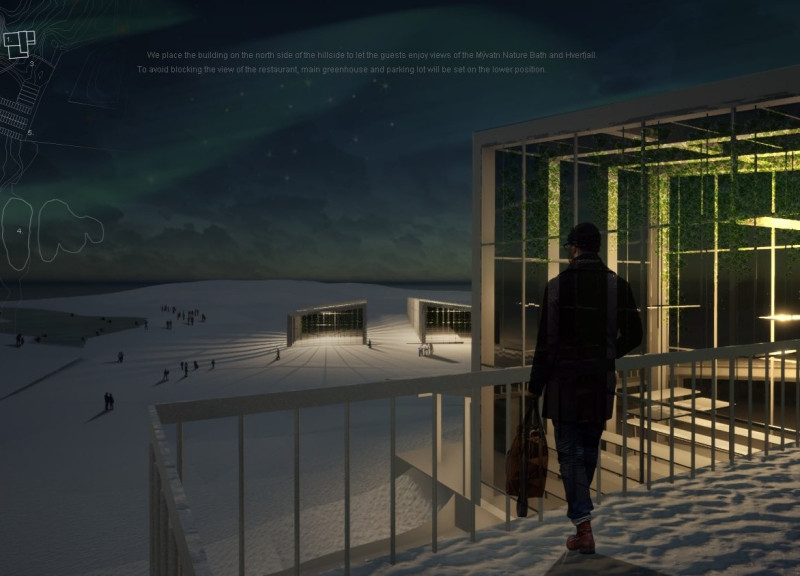5 key facts about this project
The Vogafjós Greenhouse Restaurant is located within the Vogafjós farm resort, surrounded by the picturesque landscapes of the Mývatn region. This dining venue is designed to blend with the local environment and culture. The concept focuses on a split structure that harmonizes with the natural terrain while maximizing scenic views. A greenhouse is a central feature, enhancing the connection to nature and creating an inviting space for visitors.
Design Concept
The layout includes two connected sections linked by a greenhouse that serves as a transition area. This design respects local architectural styles and creates a warm atmosphere. The double-tilted roof mirrors the existing hotel structure, helping to maintain visual consistency across the site.
Site Integration
Positioned on the north side of the hillside, the building allows for clear views of the Mývatn Nature Bath and Hverfjall. Careful placement minimizes disruption to the landscape while enhancing the experience for guests. The greenhouse and parking areas are situated at a lower elevation to keep sightlines intact, ensuring that the natural scenery remains visible.
Functional Spaces
The restaurant is organized over two levels. The first floor contains essential functional areas, including a dining space, kitchen, and multipurpose hall. This design promotes efficient operations and provides room for various uses. The second floor extends into the greenhouse, allowing guests to enjoy a more immersive experience with the surrounding greenery.
Materials and Structure
The structure is built using common steel, which offers strength and support for large windows. This choice helps to bring in natural light and creates a bright atmosphere inside. The use of materials aligns with the goal of connecting indoor and outdoor spaces, allowing the restaurant to blend into its beautiful environment.
A noteworthy feature is the thoughtful connection between the greenhouse and the dining area. This design invites guests to appreciate the natural light and the abundance of greenery, enriching their experience while dining.






















































